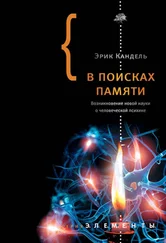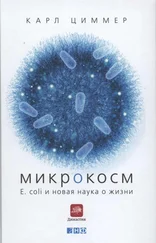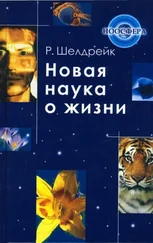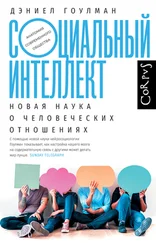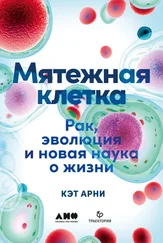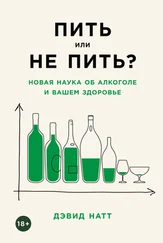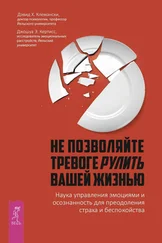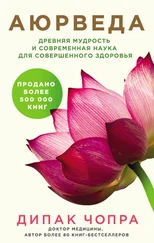4 Там же.
5 A. Parpola. Deciphering the Indus Script (Cambridge: Cambridge University Press, 1994); S. Farmer, R. Sproat, M. Witzel. “The Collapse of the Indus-Script Thesis: The Myth of a Literate Harappan Civilization”, Electronic Journal of Vedic Studies 11 (2004): 19–57.
6 Richard H. Meadow, ed. Harappa Excavations 1986–1990: A Multidisciplinary Approach to Third Millennium Urbanism (Madison, WI: Prehistory Press, 1991); A. Lawler. “Indus Collapse: The End or the Beginning of an Asian Culture?”, Science 320 (2008): 1281–1283.
7 J. Puhvel. Comparative Mythology (Baltimore: Johns Hopkins University Press, 1987).
8 Wright. The Ancient Indus; Possehl. The Indus Civilization.
9 A. Rosenberg. The Myth of the Twentieth Century: An Evaluation of the Spiritual-Intellectual Confrontations of Our Age, trans. Vivian Bird (Torrance, CA: Noontide Press, 1982).
10 L. Poliakov. The Aryan Myth: A History of Racist and Nationalist Ideas in Europe (New York: Basic Books, 1974).
11 B. Arnold. “The Past as Propaganda: Totalitarian Archaeology in Nazi Germany”, Antiquity 64 (1990): 464–478.
12 B. Ward-Perkins. The Fall of Rome and the End of Civilization (Oxford: Oxford University Press, 2005).
13 P. Bellwood. First Farmers: The Origins of Agricultural Societies (Malden, MA: Blackwell, 2005).
14 Там же.
15 M. Witzel. “Substrate Languages in Old Indo-Aryan (Rigvedic, Middle and Late Vedic)”, Electronic Journal of Vedic Studies 5 (1999): 1–67.
16 K. Thangaraj et al. “Reconstructing the Origin of Andaman Islanders”, Science 308 (2005): 996; K. Thangaraj et al. “ In situ Origin of Deep Rooting Lineages of Mitochondrial Macrohaplogroup ‘M’ in India”, BMC Genomics 7 (2006): 151.
17 R. S. Wells et al. “The Eurasian Heartland: A Continental Perspective on Y-chromosome Diversity”, Proceedings of the National Academy of Sciences of the U.S.A. 98 (2001): 10244–10249; M. Bamshad et al. “Genetic Evidence on the Origins of Indian Caste Populations”, Genome Research 11 (2001): 994–1004; I. Thanseem et al. “Genetic Affinities Among the Lower Castes and Tribal Groups of India: Inference from Y Chromosome and Mitochondrial DNA”, BMC Genetics 7 (2006): 42.
18 Thangaraj et al. “Andaman Islanders”.
19 D. Reich et al. “Reconstructing Indian Population History”, Nature 461 (2009): 489–494.
20 R. E. Green et al. “A Draft Sequence of the Neandertal Genome”, Science 328 (2010): 710–722.
21 Thangaraj et al. “Deep Rooting Lineages”.
22 Reich et al. “Reconstructing Indian Population History”; P. Moorjani et al. “Genetic Evidence for Recent Population Mixture in India”, American Journal of Human Genetics 93 (2013): 422–438.
23 Там же.
24 I. Karve. Hindu Society – An Interpretation (Pune, India: Deccan College Post Graduate and Research Institute, 1961).
25 P. A. Underhill et al. “The Phylogenetic and Geographic Structure of Y-Chromosome Haplogroup R1a”, European Journal of Human Genetics 23 (2015): 124–131.
26 S. Perur. “The Origins of Indians: What Our Genes Are Telling Us”, Fountain Ink, December 3, 2013, http://fountainink.in/?p=4669&all=1.
27 K. Bryc et al. “The Genetic Ancestry of African Americans, Latinos, and European Americans Across the United States”, American Journal of Human Genetics 96 (2015): 37–53.
28 L. G. Carvajal-Carmona et al. “Strong Amerind/White Sex Bias and a Possible Sephardic Contribution Among the Founders of a Population in Northwest Colombia”, American Journal of Human Genetics 67 (2000): 1287–1295; G. Bedoya et al. “Admixture Dynamics in Hispanics: A Shift in the Nuclear Genetic Ancestry of a South American Population Isolate”, Proceedings of the National Academy of Sciences of the U.S.A. 103 (2006): 7234–7239.
29 Moorjani et al. “Recent Population Mixture”.
30 Там же.
31 R. Thapar. Early India: From the Origins to AD 1300 (Berkeley: University of California Press, 2002); Karve. Hindu Society; Susan Bayly, Caste, Society and Politics in India from the Eighteenth Century to the Modern Age (Cambridge: Cambridge University Press, 1999); M. N. Srinivas. Caste in Modern India and Other Essays (Bombay: Asia Publishing House, 1962); L. Dumont. Homo Hierarchicus: The Caste System and Its Implications (Chicago: University of Chicago Press, 1980).
32 K. Suresh Singh. People of India: An Introduction (People of India National Series) (New Delhi: Oxford University Press, 2002); K. C. Malhotra, T. S. Vasulu. “Structure of Human Populations in India” in Human Population Genetics: A Centennial Tribute to J. B. S. Haldane, ed. P. P. Majumder (New York: Plenum Press, 1993), 207–234.
33 Karve. “Hindu Society”.
34 Там же.
35 N. B. Dirks. Castes of Mind: Colonialism and the Making of Modern India (Princeton, NJ: Princeton University Press, 2001); N. Boivin. “Anthropological, Historical, Archaeological and Genetic Perspectives on the Origins of Caste in South Asia” in The Evolution and History of Human Populations in South Asia, ed. M. D. Petraglia and B. Allchin (Dordrecht, The Netherlands: Springer, 2007), 341–362.
36 Reich et al. “Reconstructing Indian Population History”.
37 M. Arcos-Burgos, M. Muenke. “Genetics of Population Isolates”, Clinical Genetics 61 (2002): 233–247.
38 N. Nakatsuka et al. “The Promise of Discovering PopulationSpecific Disease-Associated Genes in South Asia”, Nature Genetics 49 (2017): 1403–1407.
39 Reich et al. “Reconstructing Indian Population History”.
40 I. Manoharan et al. “Naturally Occurring Mutation Leu307Pro of Human Butyrylcholinesterase in the Vysya Community of India”, Pharmacogenetics and Genomics 16 (2006): 461–468.
41 A. E. Raz. “Can Population-Based Carrier Screening Be Left to the Community?”, Journal of Genetic Counseling 18 (2009): 114–118.
42 I. Lazaridis et al. “Genomic Insights into the Origin of Farming in the Ancient Near East”, Nature 536 (2016): 419–424; F. Broushaki et al. “Early Neolithic Genomes from the Eastern Fertile Crescent”, Science 353 (2016): 499–503.
43 Там же.
44 Lazaridis et al. “Genomic Insights”.
45 Неопубликованные результаты из лаборатории Дэвида Райха.
Глава 7. В поисках предков индейцев
1 B. Mindlin. Unwritten Stories of the Suruí Indians of Rondônia (Austin: Institute of Latin American Studies; distributed by the University of Texas Press, 1995).
2 D. Reich et al. “Reconstructing Native American Population History”, Nature 488 (2012): 370–374.
3 P. Skoglund et al. “Genetic Evidence for Two Founding Populations of the Americas”, Nature 525 (2015): 104–108.
4 P. D. Heintzman et al. “Bison Phylogeography Constrains Dispersal and Viability of the Ice Free Corridor in Western Canada”, Proceedings of the National Academy of Sciences of the U.S.A. 113 (2016): 8057–8063; M. W. Pedersen et al. “Postglacial Viability and Colonization in North America’s Ice-Free Corridor”, Nature 537 (2016): 45–49.
5 J. Acosta. Historia Natural y Moral de las Indias: En que se Tratan las Cosas Notables del Cielo y Elementos, Metales, Plantas y Animales de Ellas y los Ritos, Ceremonias, Leyes y Gobierno y Guerras de los Indios (Seville: Juan de León, 1590).
Читать дальше
Конец ознакомительного отрывка
Купить книгу
![Дэвид Райх Кто мы и как сюда попали [Древняя ДНК и новая наука о человеческом прошлом] обложка книги](/books/396012/devid-rajh-kto-my-i-kak-syuda-popali-drevnyaya-dnk-i-cover.webp)
